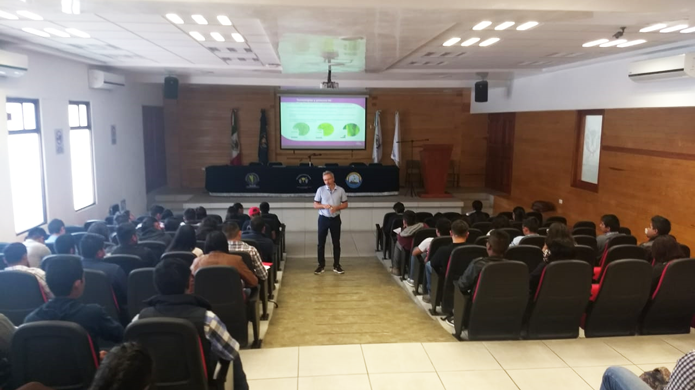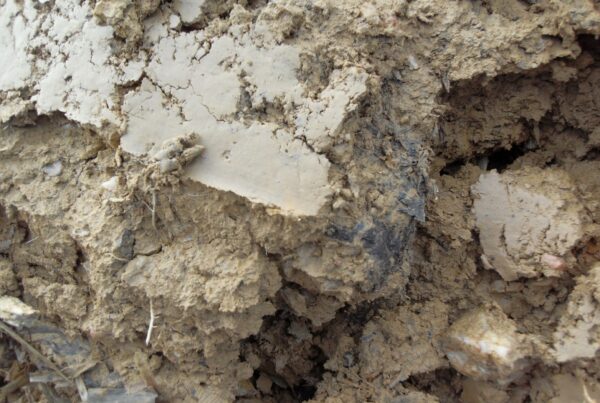Olmix Group shared several updates on the benefits of using marine algae-based alternatives for horticulture at the University of Chapingo in Mexico.
“The outstanding properties of algae make them the perfect resource when it comes to horticulture”, Mr Georges Veber, Olmix Plant Care Technical Director, said in front of a crowded audience at the University of Chapingo in Mexico, where many students and professional experts attended on the 8th August to get up-to-date with the latest research by Olmix Group on horticulture and other cultivation practices.
“Algae are a unique renewable source. Their growth speed rate is the greatest to be found in nature, up to 30% per day! They produce more than 50% of the oxygen of the planet and they play a key role if we talk about greenhouse effect and gases. Moreover, they have a huge potential to be used an applied in plants, animal and humans but it is still a non-exploited resource nowadays”, Mr Veber explained.

Georges Veber during the conference.
Although seaweeds may be divided in several specific species, all of them possess common several compounds and properties that have been eventually found to be of great benefit. Olmix Group has developed innovative and unique technologies to extract several active components from marine macro-algae to be used for horticulture and other cultivation practices.
“Here we are basically talking about green and red algae. These algae are made up of sulfated polysaccharides, proteins, lipids, minerals, vitamins, pigments and other secondary metabolites. Olmix transformation process makes it possible to obtain algae extracts with highly soluble molecules for enhanced absorption efficiency, small molecules to enable good plant penetration, and a specific content of active ingredients and nutrients to elicit specific physiological responses from the plant, among others”.
Therefore, algae have proved to be a good solution for plant growth. Recent studies show that they have very good results in terms of plant nutrition and, also, that they can be used to develop algae-based biostimulants and elicitors thanks to their unique properties.
- Lipids and sugars will provide plants with energy.
- The high protein content will bring a wide spectrum of essential aminoacids.
- Minerals, which are basic for the structure of the plant.
- Vitamins for a well-functioning.
“Algae are like a cocktail of many organic nutritive elements and minerals. Algae contain a series of molecules that are going to stimulate the metabolism of the plant as well as their biochemical and physiological processes. This results in a biostimulant and elicitor effect that makes possible to meet the crop’s needs and address both stress situations and key physiological processes. Not only does it boost performance and yield, it enables better control of copper in the soil, resulting in more concentrated cell tissues, harder plants and better control of diseases”, Mr Veber concluded.

Georges Veber during the conference.




